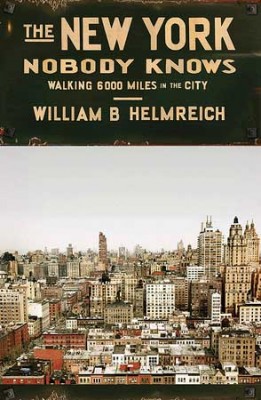
click to return to reviews index
THE NEW YORK NOBODY KNOWS: Walking 6,000 Miles in the City
by William Helmreich
Princeton University Press, 449 pages
BAGHDAD: THE CITY IN VERSE
edited by Reuven Snir
Harvard University Press, 339 pages
reviewed by Nathaniel Popkin
Writers, this one included, have long struggled to capture in words the dynamic and multi-layered ways that cities change. Cities themselves are powerful change agents in the wider world, but they are defined and redefined constantly by the evolving tastes and desires of their residents (who themselves are always changing), technology, culture and religion, structural political and economic shifts, and the feedback loop of history and history-telling, characterized through myth, poetry, and mass media. Here’s how I try to make sense of it in Song of the City (Four Walls Eight Windows/Basic Books):

click to return to reviews index
Think of the city as a collection of swarming cells that change, adapt, grow, shrink, and grow simultaneously. Imagine hundreds or thousands or millions of cells, each living and dying not in parallel or even in sequence, but overlapping from one generation to the next. The whole place moves in several directions at once. Unless calamity hits, no city dies in a single instant. Despite what you read in the papers, no city, no neighborhood even, is ever miraculously reborn.
I want to say cities change because people, in all their contradictions, make them. But urban change can also be terribly unnerving, even terrifying, and sometimes violent. We might reject it outright, and fight it to the death. We might campaign to preserve a building that harkens to another time, or demand that a neighborhood remains “Italian” or “Puerto Rican” or “black.” And we might mourn for a city “that once was.”
Perhaps, in part, it’s the very conflict between change and constancy that makes cities such interesting and powerful places. Now, two very different but surprisingly related books published at the end of last year, The New York Nobody Knows: Walking 6,000 Miles in the City by William Helmreich (Princeton University Press) and Baghdad: The City in Verse, edited by Reuven Snir (Harvard University Press), help us frame and reframe the discussion. Both Helmreich, a sociologist who has studied New York for four decades and Snir, a professor of Arabic literature at the University of Haifa, seem to agree about the organic nature of urban change. “A city is not a static unit,” writes Helmreich in the introduction to his book. “It’s a dynamic and constantly environment, adapting to the needs of its residents.” Citing the prominent sociologist Janet Abu-Lughod, who passed away a month ago, Snir writes in his excellent introductory essay, “Cities are ‘living processes’ rather than ‘products’ or ‘formalistic shells for living’,” an idea I mirrored in Song of the City, which is organized into parts: pulse, body, soul, and seed.
Both of these admirable new books are indeed necessarily open-ended explorations: Helmreich’s across space, Snir’s through time. Over four years beginning in 2008, New York native Hemreich walked 6,000 miles across nearly every block of New York’s five boroughs; Snir, whose parents were exiled from Baghdad to Israel in 1951, parceled through more than a century of poetry about Baghdad, translating and ultimately presenting 199 poems by some 123 poets.
The cities, too, are distinctly comparable. Baghdad was founded in an instant, in 762, by the Caliph al-Mansur, who called his city Madinat al-Salam, the City of Peace. It was to be the first city in the Arab world that would eschew placelessness. Until then, according to Snir, the Bedouin notion of genealogy framed one’s Islamic self-conception far more than the idea of homeland. Within a century, having made “place and self mutually interdependent,” Baghdad became one of the largest cities in the world, and beyond that, writes Snir, in a manner that makes us think of New York as a symbol for America, “Baghdad has been the city of Islam and Arabism par excellence—the center of the Islamic empire and the Arab world, in reality and certainly metaphorically. Baghdad was at times a metaphor even for the entire East.”
It became an open and pluralistic and hedonistic city through the end of the first millennium, into the second. It was, as the poet Ibn al-Rumi writes in the 9th century, “A city where I accompanied childhood and youthfulness;/ there I wore a new cloak of glory./When she appears in the imagination, I see her budding branches aflutter.” And then, in 1258, the city was destroyed by the Mongol Hulagu, a founder of the Persian dynasty Il-Khanid. This was all but the death of the place; Baghdad didn’t quite recover until the late 19th century into the 20th century, when it flourished as a tolerant, modern metropolis. The Baghdad of a century ago, in 1914, Snir points out, was majority Jewish, and filled otherwise with Arabs, Bedouins, Christians, Kurds, Persians, and Turks. At that very moment, melting pot New York was enjoying the heights of 20th century immigration and the first great migration of African Americans to the more tolerant north.
Of course, Sadaam Hussein and the modern Hulagu, the United States, eventually put that to an end; and in a sense, the cities’ fates became intertwined, as the poet Adonis, whose work on Baghdad Snir has collected in this volume, notes in the poem Salute to Baghdad (2003),
Put your coffee aside and drink something else.
Listening to what the invaders are declaring:
“With the help of God,
We are conducting a preventative war,
Transporting the water of life
From the banks of the Hudson and Thames
To flow in the Tigris and Euphrates
Snir presents a great deal of poetry on Baghdad from the second half of the 20th century and into the 21st, a time marked at first by modernity and cultural blossoming and at last by utter destruction and despair. Writes the poet Bushra al-Bustani in A Sorrowful Melody, “The tanks of malice wander./My wound/Is turned away like an abandoned horse/Scorched by an Arabian sun,/Chewed by worms./Picasso paints another Guernica,/Painting Baghdad under the feet of boors./Freedom is a lute/Strummed by a nameless dwarf./Paintings in Baghdad’s museums/Are at the mercy of the wind.”
In the book’s afterword, the Iraqi writer Abdul Kader el-Janabi notes that with its history of destruction, “Baghdad is an easy metaphor for revival and eclipse.” Indeed, despite attempts to conjure more complex and dynamic narratives for their cities, both Helmreich’s and Snir’s books are infused with that traditional broad stroke urban metaphor, of life and vitality followed by decline and death and (hopefully) life again. The difference is the point of view. New York, in the dusk of the Michael Bloomberg era, is triumphant: safe, utterly vital, nearly entirely tolerant. New York today is New York par excellence. As the protagonist of his story, Helmreich, who grew up in upper Manhattan in the 1950s, carries this prejudice into his exploration, which tends to downplay the challenges to New York’s massive homelessness problem, for example, or ethnic tension. He has a right to, for certain. New York, which lost more than 800,000 people during Helmreich’s formative years, has soared in the last two decades. He is, I think, both proud and amazed. And though Baghdad is now and again one of the largest cities in the Middle East (its population is 7+ million; New York’s is 8.3 million), Snir’s narrative is prejudiced by his own family’s story of loss of a beloved homeland and the war on Iraq, which left vast sections of the city in ruins.
The best way I know to counter the power of this broad, and deeply ingrained, urban narrative is with writing—and in the case of poetry, imagery—that’s specific, and particular to time, place, and circumstance. In this regard, I was somewhat (but only somewhat) disappointed by Snir’s collection. There is much metaphorical writing across the eras—“In the sky/The poles bow,/searching for what deserves illumination,/But the streets are overcrowded/With void.” (Sinan Antoon, 1989)—and not nearly enough visceral reality. I wanted to be taken onto an overcrowded street of the ancient city, of the modern city, of the city post-war to smell and hear and taste it. For that reason, one of my favorites in the collection is An Elegy for al-Sindibad Cinema, by the late Sargon Boulus, published in 2008. The movie house, a fixture of the cosmopolitan city of the mid-20th century, was bombed during the Iraq war. “Those evenings were destroyed…/Our white shirts, Baghdad summers…/How will we dream about traveling to any island?” he asks,
Al-Sindibad Cinema had been destroyed!
Heavy is the watered hair of the drowned person
Who returned to the party
After the lamps were turned off,
The chairs were piled up on the deserted beach,
And the Tigris’s waves were tied by chains.
Helmreich seems aware of this pitfall; his epic walk was meant to—and did—put him face-to-face with hundreds of New Yorkers on their own turf, to see them as individuals whose daily reality helps define the city of today, and who in turn are shaped by the city. And those New Yorkers are complex beings, as he writes, “a person’s identity can include, say, religion, community, race, language, and economic considerations all at once. Human beings are naturally free to pick and choose from these.”
In essence, he’s reporting out on the state of things. In Jamaica, Queens, he meets an immigrant from the small South American country of Guyana who has planted a garden. “It’s a small area,” writes Helmreich, “about four feet long and three feet wide, surrounded by a miniature white picket fence.”
“These flowers are beautiful,” I say by way of starting a conversation.
Small and wiry, with bright teeth framed in part by a neat mustache, he responds with a soft smile, “They are flowers from my country, Guyana, which I love. I planted them to remind me of home. This way, when I look outside I always remember the beautiful place I lived in before I came here.”
Foreign-born people now account for 40 percent of New Yorkers; with their American-born children, Helmreich points out, they are the city’s majority. He thus spends a great deal of time on ethnicity, devoting chapters on new immigrants, “the Future of Ethnic New York,” and on New York’s neighborhood-based communities, home to so much of the immigrant experience.
In the chapter, “Enjoying the City,” Helmreich finds himself in the northwest Bronx, at a concert of the Jamaican reggae singer Beres Hammond. Helmreich describes the scene, “people on their feet, dancing the entire time,” the make-up of the audience—99.9 percent West Indian, 65 percent women—“dressed about two steps above what you’d call casual.” This must have been a fascinating event as cultural tableau. The author might have described in detail food, dress, conversations, art, and even the neighborhood around the venue at CUNY Herbert Lehman College. But instead, Helmreich gives the reader a kind of quick analysis in language that feels too broad and too conjectural (and full of assumptions), hoping to categorize the scene rather than record it for its essence. “Each immigrant who comes to the United States,” he writes,
leaves behind ways of life that need to be adapted to fit in with their new circumstances. Yet they also wish to preserve their identity. Yes, they’re now in America and hearing American music, but also important is the music of the homeland, accompanied by lyrics that express yearning, memories, shared values, and forms of cultural expression—how the houses looked, how the foods tasted, and how the people lived and related to one another. And of course the lyrics speak of the challenges of making it in their new homes.
Helmreich goes on to reveal some of Hammond’s stage banter, but of course what the reader really wants is to read the lyrics that are about the struggle to live in two worlds, hear the conversations, and taste the food. The author has it all, we presume, in his notes, but this visceral, sensatory New York isn’t revealed here. Nor are buildings or streets described in any consistent way. This isn’t Joseph Mitchell; we can’t quite conjure Helmreich’s hidden New York.
Part of the issue here is that the author is too ambitious: he wants to give us the whole city, the city he’d lovingly discovered and rediscovered in his four year walk, but 468 square miles is too vast a territory for ethnography. And his sociologist’s instincts work against him: amidst the panorama, it’s extremely hard to categorize and label in ways that expand the reader’s interest and imagination. To try to make sense of complex things, he’s all too often forced to sweeping judgment and summary statements that feel inadequate. Calling some place a “bad neighborhood” or diverse people “gentrifiers” doesn’t help. Labels have a way of distancing us from the complicated reality.
Interestingly, the book improves vastly as it moves along. In the long chapter on gentrification, Helmreich is able to convincingly put analytic skills to work, and perhaps because the people he encountered in gentrifying neighborhoods are English speaking, the quotes from them are longer and more resonant. It also appears that the systems and values at work in these places feel more accessible to him, and therefore to the reader. But he is right focus so substantially on immigration and immigrant life. Nothing so much defines the process of urban change than the ways newcomers adapt, reject, assimilate, become inspired by the city they’re adopting, which is after all the collective product of the many millions of people who had come before.
 Cleaver reviews editor Nathaniel Popkin is the author of five books, including the 2018 novel Everything is Borrowed, and co-editor (with Stephanie Feldman) of the anthology Who Will Speak for America? His essays and works of criticism have appeared in The New York Times, Wall Street Journal, Kenyon Review, LitHub, Tablet Magazine, and Public Books. If you are an author or publicist seeking reviews or a writer hoping to write reviews for Cleaver, query Nathaniel.
Cleaver reviews editor Nathaniel Popkin is the author of five books, including the 2018 novel Everything is Borrowed, and co-editor (with Stephanie Feldman) of the anthology Who Will Speak for America? His essays and works of criticism have appeared in The New York Times, Wall Street Journal, Kenyon Review, LitHub, Tablet Magazine, and Public Books. If you are an author or publicist seeking reviews or a writer hoping to write reviews for Cleaver, query Nathaniel.
Read more from Cleaver Magazine’s Book Reviews.
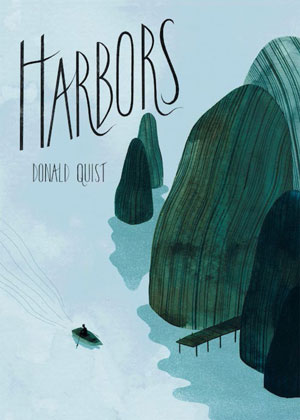 HARBORS
HARBORS
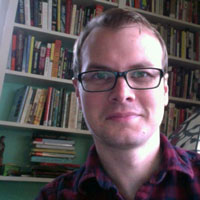 Benjamin Woodard is a writer living in Connecticut. His recent criticism has appeared in Kenyon Review Online, Vol. 1 Brooklyn, and The Georgia Review. He is an editor for the online magazines Numéro Cinq and Atlas and Alice. His short story “The Long Green Stretch, the Tall Trees, the Clouds Shaped like Stars” appears in Cleaver’s Issue No. 3. Find him online at benjaminjwoodard.com.
Benjamin Woodard is a writer living in Connecticut. His recent criticism has appeared in Kenyon Review Online, Vol. 1 Brooklyn, and The Georgia Review. He is an editor for the online magazines Numéro Cinq and Atlas and Alice. His short story “The Long Green Stretch, the Tall Trees, the Clouds Shaped like Stars” appears in Cleaver’s Issue No. 3. Find him online at benjaminjwoodard.com. 
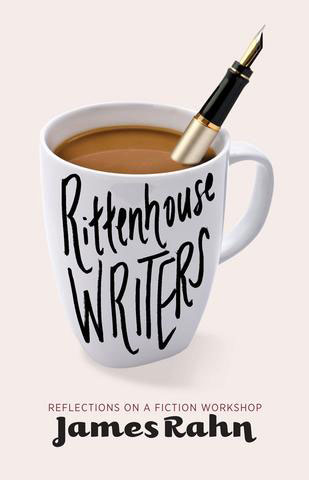 RITTENHOUSE WRITERS
RITTENHOUSE WRITERS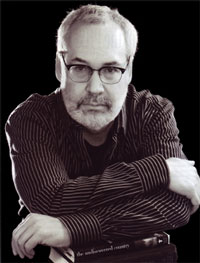
 Jacqueline Kharouf has an MFA in creative writing, fiction, from the Vermont College of Fine Arts. Her work has appeared in Harpoon Review, Matchbook Literary Magazine, Gingerbread House, The Examined Life Journal, Shout Out UK, South Dakota Review, Fiction Vortex, Otis Nebula, NANO Fiction, and Numéro Cinq Magazine. In 2011, she won third place in H.O.W. Journal’s Fiction contest, judged by Mary Gaitskill. Jacqueline blogs at
Jacqueline Kharouf has an MFA in creative writing, fiction, from the Vermont College of Fine Arts. Her work has appeared in Harpoon Review, Matchbook Literary Magazine, Gingerbread House, The Examined Life Journal, Shout Out UK, South Dakota Review, Fiction Vortex, Otis Nebula, NANO Fiction, and Numéro Cinq Magazine. In 2011, she won third place in H.O.W. Journal’s Fiction contest, judged by Mary Gaitskill. Jacqueline blogs at  THE CRETAN RUNNER: HIS STORY OF THE GERMAN OCCUPATION
THE CRETAN RUNNER: HIS STORY OF THE GERMAN OCCUPATION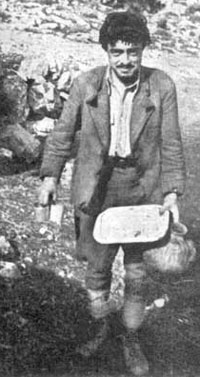
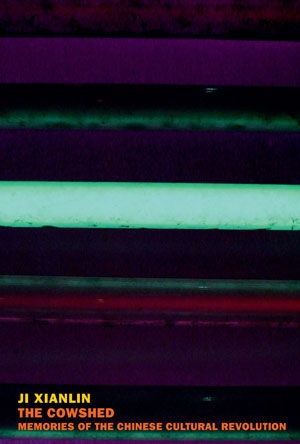 Given the evocativeness of The Cretan Runner, I was expecting an even more carefully observed story from The Cowshed. After all, its author was not a naïve Greek shepherd but a prolific professor of Sanskrit, as well as (in later life) a public intellectual and university administrator. But The Cowshed has a hazy, hermetic feel to it that at first I couldn’t understand. The introduction by New Yorker writer Zha Jianying explains in part why the memoir is so opaque. As she points out, China remains deeply ashamed of the Cultural Revolution, in which the nation’s young people viciously attacked its intellectuals as counterrevolutionaries. Zha helps contextualize the book, noting that “Coming out in 1998 during a politically relaxed moment, [The Cowshed] probably benefitted from the author’s eminent status in China . . . . But authorities also took steps quietly to restrict public discussion of the memoir, as its subject continues to be treated as sensitive.” In such a climate, Ji had to edit himself; in fact, he acknowledges in a preface that his first draft of the book, written in 1992, was too hostile and vengeful to publish.
Given the evocativeness of The Cretan Runner, I was expecting an even more carefully observed story from The Cowshed. After all, its author was not a naïve Greek shepherd but a prolific professor of Sanskrit, as well as (in later life) a public intellectual and university administrator. But The Cowshed has a hazy, hermetic feel to it that at first I couldn’t understand. The introduction by New Yorker writer Zha Jianying explains in part why the memoir is so opaque. As she points out, China remains deeply ashamed of the Cultural Revolution, in which the nation’s young people viciously attacked its intellectuals as counterrevolutionaries. Zha helps contextualize the book, noting that “Coming out in 1998 during a politically relaxed moment, [The Cowshed] probably benefitted from the author’s eminent status in China . . . . But authorities also took steps quietly to restrict public discussion of the memoir, as its subject continues to be treated as sensitive.” In such a climate, Ji had to edit himself; in fact, he acknowledges in a preface that his first draft of the book, written in 1992, was too hostile and vengeful to publish.

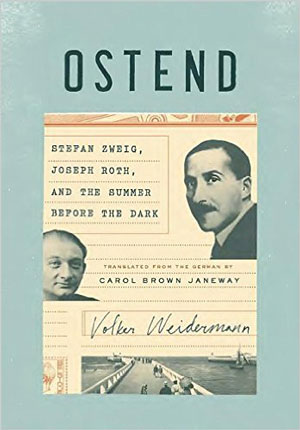 OSTEND: STEFAN ZWEIG, JOSEPH ROTH, AND THE SUMMER BEFORE THE DARK
OSTEND: STEFAN ZWEIG, JOSEPH ROTH, AND THE SUMMER BEFORE THE DARK
 Michelle Fost is a writer living in Toronto. Her fiction has appeared in The Painted Bride Quarterly and her book reviews have appeared in The New York Times Book Review, The Philadelphia Inquirer, and The Boston Phoenix Literary Section.
Michelle Fost is a writer living in Toronto. Her fiction has appeared in The Painted Bride Quarterly and her book reviews have appeared in The New York Times Book Review, The Philadelphia Inquirer, and The Boston Phoenix Literary Section.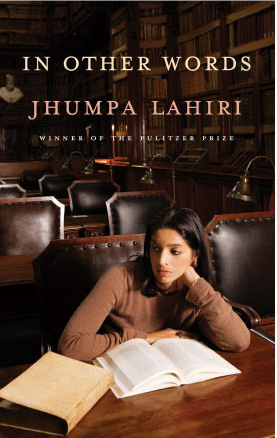 IN OTHER WORDS
IN OTHER WORDS
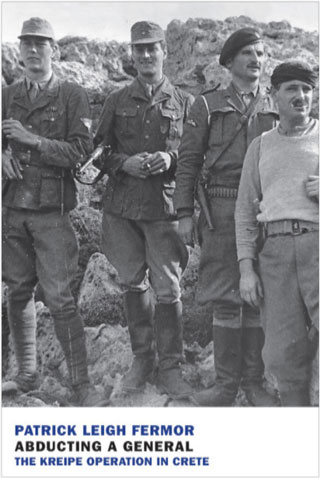 ABDUCTING A GENERAL
ABDUCTING A GENERAL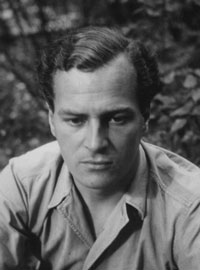
 Rory McCluckie is a freelance writer and editor from Manchester, England. A graduate of the University of Leeds, he currently resides in Montreal.
Rory McCluckie is a freelance writer and editor from Manchester, England. A graduate of the University of Leeds, he currently resides in Montreal.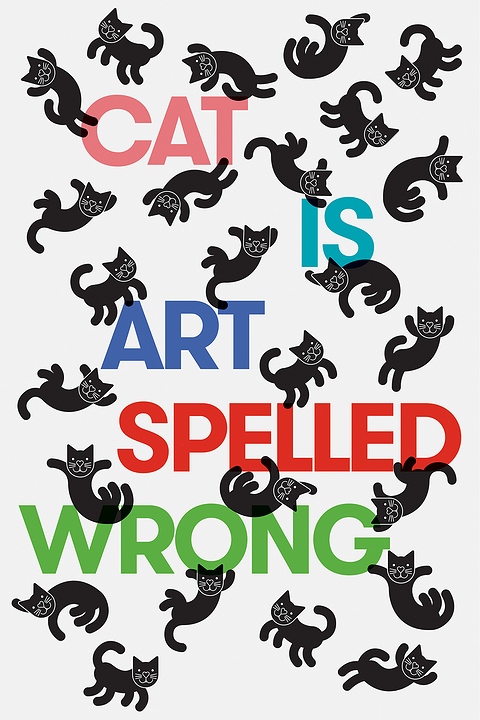 CAT IS ART SPELLED WRONG
CAT IS ART SPELLED WRONG
 A recent graduate from Purchase College, Justin Goodman is working to establish a career and develop knowledge of the literary scene. His writing has been published in Submissions Magazine and Italics Mine.
A recent graduate from Purchase College, Justin Goodman is working to establish a career and develop knowledge of the literary scene. His writing has been published in Submissions Magazine and Italics Mine.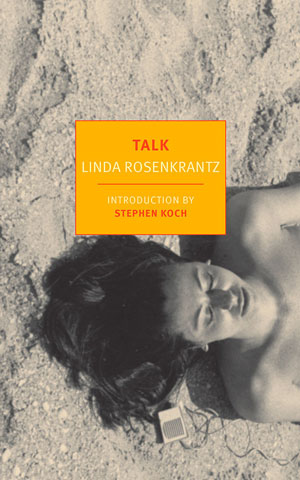 TALK
TALK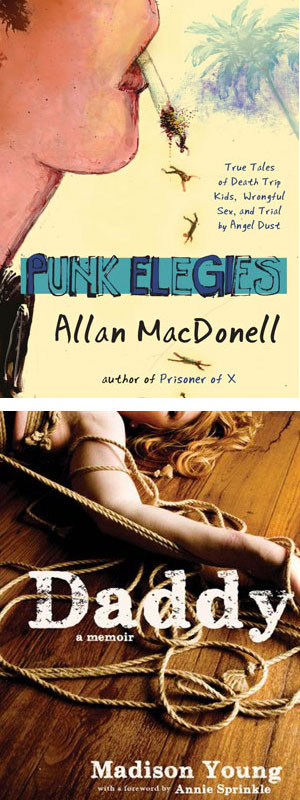 PUNK ELEGIES
PUNK ELEGIES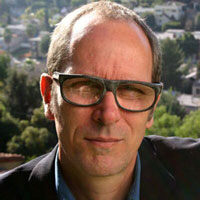

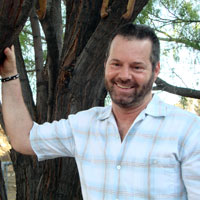
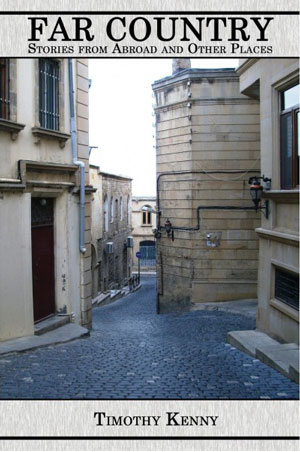 FAR COUNTRY: STORIES FROM ABROAD AND OTHER PLACES, essays
FAR COUNTRY: STORIES FROM ABROAD AND OTHER PLACES, essays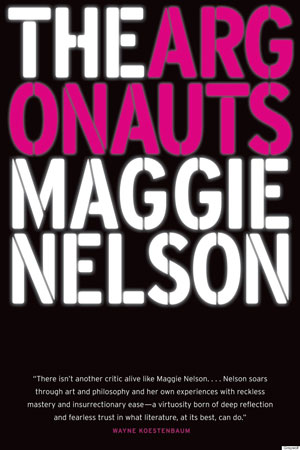 THE ARGONAUTS
THE ARGONAUTS Gabriel Chazan, a filmmaker and writer, is from Toronto, Canada. He continues to study art history at Sarah Lawrence College after an exchange at Wadham College, Oxford University. He particularly enjoys writing about contemporary art and photography.
Gabriel Chazan, a filmmaker and writer, is from Toronto, Canada. He continues to study art history at Sarah Lawrence College after an exchange at Wadham College, Oxford University. He particularly enjoys writing about contemporary art and photography.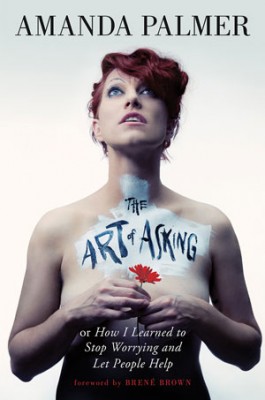 THE ART OF ASKING
THE ART OF ASKING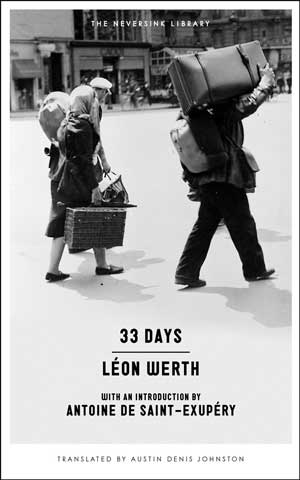 33 DAYS
33 DAYS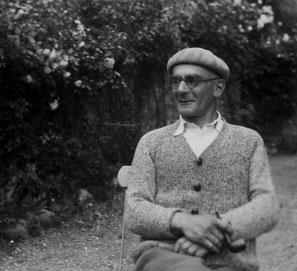

 Cleaver reviews editor
Cleaver reviews editor 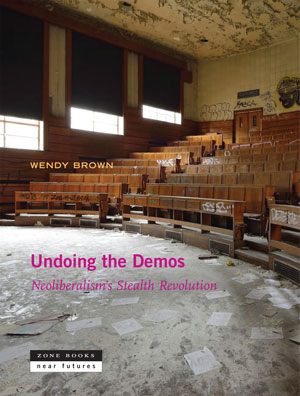 UNDOING THE DEMOS: Neoliberalism’s Stealth Revolution
UNDOING THE DEMOS: Neoliberalism’s Stealth Revolution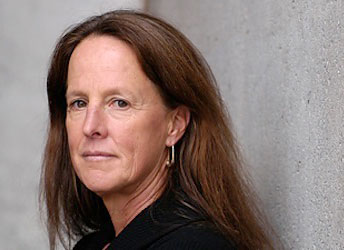
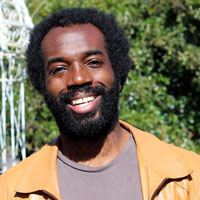 Irami Osei-Frimpong is a writer living in Chicago. He is the author of two novels and a stack of short stories. He and his wife created
Irami Osei-Frimpong is a writer living in Chicago. He is the author of two novels and a stack of short stories. He and his wife created 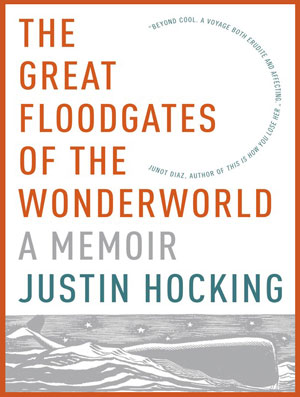 THE GREAT FLOODGATES OF THE WONDERWORLD
THE GREAT FLOODGATES OF THE WONDERWORLD

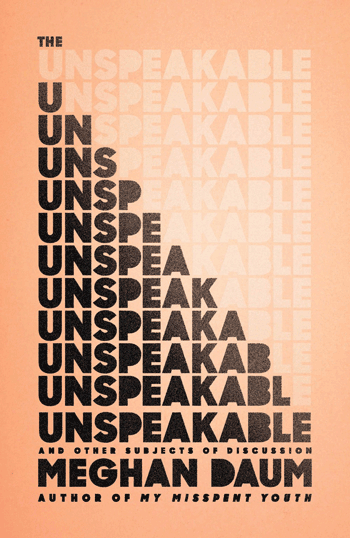 The Unspeakable: And Other Subjects of Discussion
The Unspeakable: And Other Subjects of Discussion

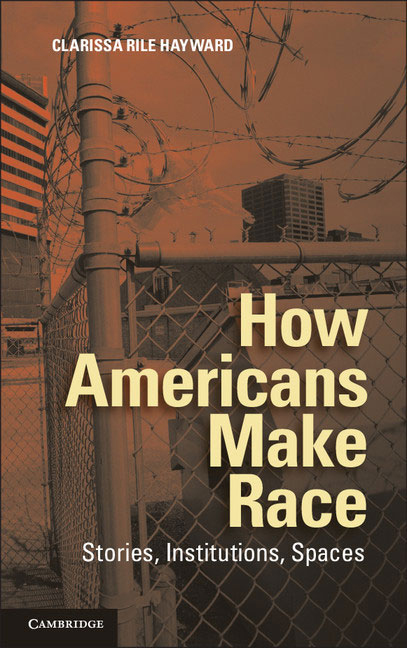 HOW AMERICANS MAKE RACE:
HOW AMERICANS MAKE RACE:


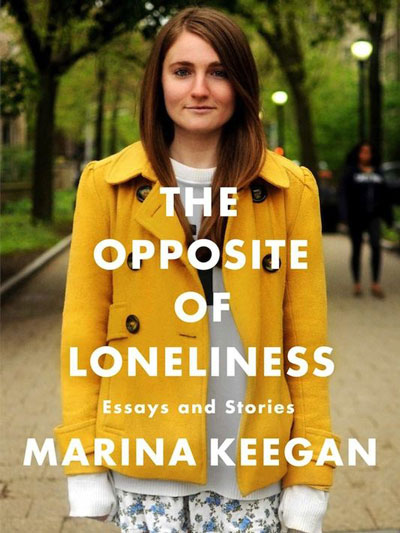 THE OPPOSITE OF LONELINESS
THE OPPOSITE OF LONELINESS
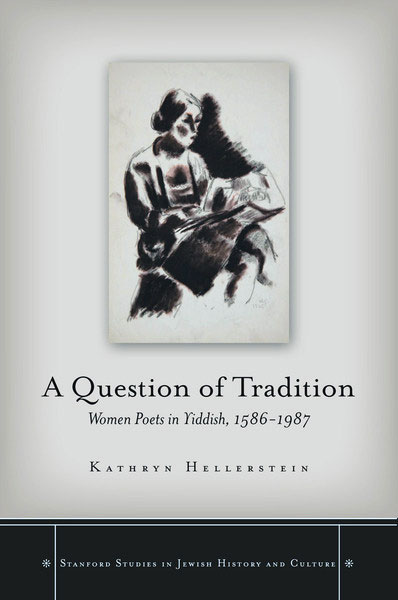 A QUESTION OF TRADITION: WOMEN POETS IN YIDDISH, 1586-1987
A QUESTION OF TRADITION: WOMEN POETS IN YIDDISH, 1586-1987
 Alyssa Quint is the author of a forthcoming book on the Yiddish theater entitled The Social Life of Jewish Theater in Imperial Russia. She lives in New York City.
Alyssa Quint is the author of a forthcoming book on the Yiddish theater entitled The Social Life of Jewish Theater in Imperial Russia. She lives in New York City.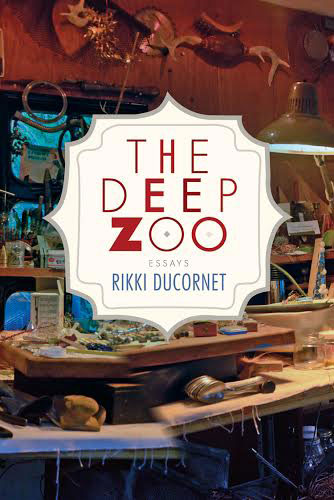 THE DEEP ZOO
THE DEEP ZOO
 Kim Steele lives in Chicago where she spends most of her days reading near the space heater. You can follow her on Twitter at KJ_Steele.
Kim Steele lives in Chicago where she spends most of her days reading near the space heater. You can follow her on Twitter at KJ_Steele.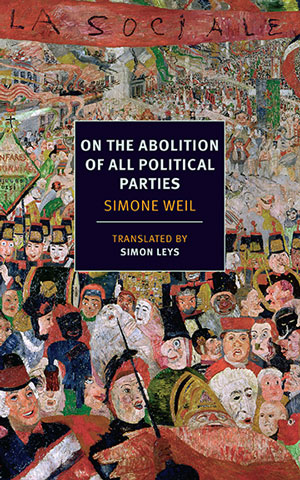 ON THE ABOLITION OF ALL POLITICAL PARTIES
ON THE ABOLITION OF ALL POLITICAL PARTIES
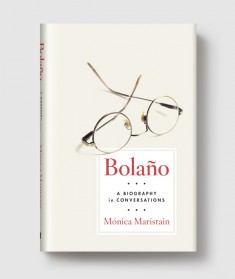 Bolaño: A BIOGRAPHY IN CONVERSATIONS
Bolaño: A BIOGRAPHY IN CONVERSATIONS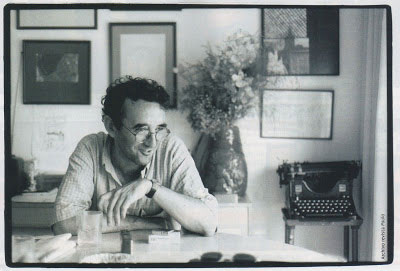
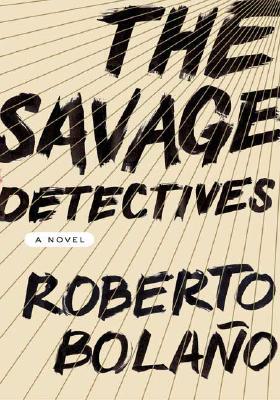 He persists with this persona into the later years, but his friends recall a more spontaneous, and often more fun adult than the Bolaño of myth. Bolaño was active in a group of avant-garde Mexican writers who called themselves the Infrarealists. He may even have been the founder. The group was memorialized in The Savage Detectives as the Visceral Realists. Juan García Madero, the narrator of that novel, writes at its outset: “I’ve been cordially invited to join the visceral realist. I accepted, of course. There was no initiation ceremony. It was better that way.”
He persists with this persona into the later years, but his friends recall a more spontaneous, and often more fun adult than the Bolaño of myth. Bolaño was active in a group of avant-garde Mexican writers who called themselves the Infrarealists. He may even have been the founder. The group was memorialized in The Savage Detectives as the Visceral Realists. Juan García Madero, the narrator of that novel, writes at its outset: “I’ve been cordially invited to join the visceral realist. I accepted, of course. There was no initiation ceremony. It was better that way.” Latin America’s relationship to English-language readers is essential here. According to some of Maristain’s interlocutors, the popularity he’s enjoyed in the United States is evidence of the a loss of faith in literature following the “postmodern games” of the late 20th century. In addition to the fantasy of a writer who gives up everything for his craft, there’s the playful earnestness of the Infrarealists. Like Juan García Madero, Juan Pascoe, a real-life poet, reminisces on the moment that “everyone said: ‘The Infrarealist movement has begun,’ I can’t remember if we signed a paper or not, and then we left.” Yet it’s not so simple as a reckless pursuit of literary poverty. According to pretty much every source, Bolaño’s primary goal was indeed literary fame, and yes, it did lead him through certain precarious jobs—there were times when he worked at a campsite half the year in order to save money for the other half, when he lived in Madrid, for example. But from his earliest days, his friends and family point out, he aspired to a middling class status, and to perform it well. He was a fastidious dresser, for example, always ironing his clothes; there had to be dignity despite low income.
Latin America’s relationship to English-language readers is essential here. According to some of Maristain’s interlocutors, the popularity he’s enjoyed in the United States is evidence of the a loss of faith in literature following the “postmodern games” of the late 20th century. In addition to the fantasy of a writer who gives up everything for his craft, there’s the playful earnestness of the Infrarealists. Like Juan García Madero, Juan Pascoe, a real-life poet, reminisces on the moment that “everyone said: ‘The Infrarealist movement has begun,’ I can’t remember if we signed a paper or not, and then we left.” Yet it’s not so simple as a reckless pursuit of literary poverty. According to pretty much every source, Bolaño’s primary goal was indeed literary fame, and yes, it did lead him through certain precarious jobs—there were times when he worked at a campsite half the year in order to save money for the other half, when he lived in Madrid, for example. But from his earliest days, his friends and family point out, he aspired to a middling class status, and to perform it well. He was a fastidious dresser, for example, always ironing his clothes; there had to be dignity despite low income.
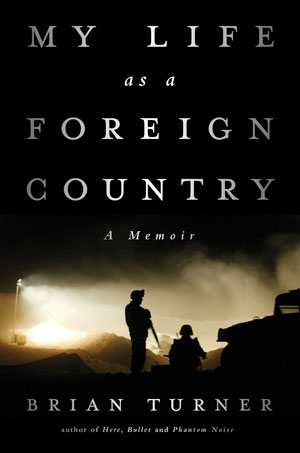 MY LIFE AS A FOREIGN COUNTRY: A MEMOIR
MY LIFE AS A FOREIGN COUNTRY: A MEMOIR
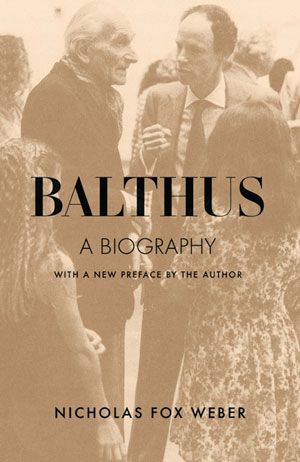
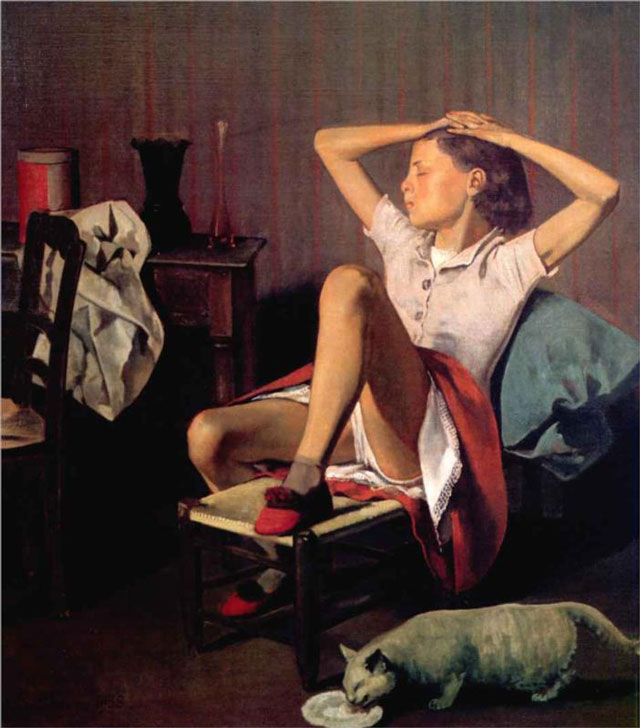


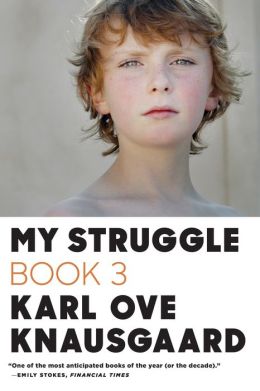
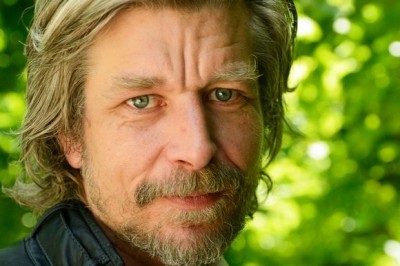


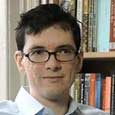




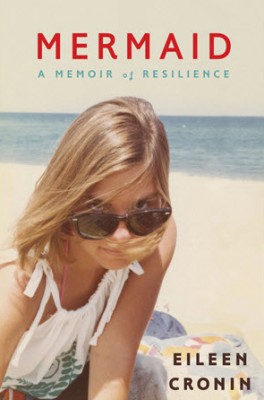


 Elizabeth Mosier teaches creative writing at Bryn Mawr College. Her essay on archaeology and Alzheimer’s, “The Pit and the Page,” appears in Issue 47 of Creative Nonfiction.
Elizabeth Mosier teaches creative writing at Bryn Mawr College. Her essay on archaeology and Alzheimer’s, “The Pit and the Page,” appears in Issue 47 of Creative Nonfiction.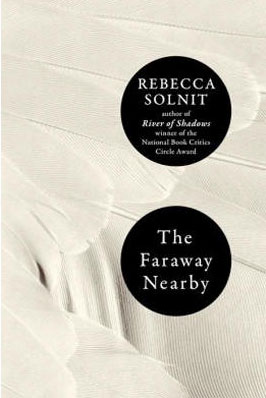
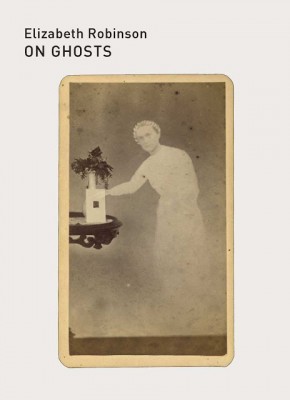
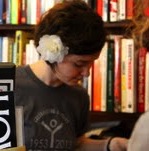 Vanessa Martini graduated from Bard College in 2012 with a degree in creative writing. She now works as a bookseller in San Francisco, where she eats a lot of avocados and walks everywhere. In the past she has interned for McSweeney’s Lucky Peach, where she milked a cow for an assignment, and for two sex writers, for whom she had to read 50 Shades of Grey.
Vanessa Martini graduated from Bard College in 2012 with a degree in creative writing. She now works as a bookseller in San Francisco, where she eats a lot of avocados and walks everywhere. In the past she has interned for McSweeney’s Lucky Peach, where she milked a cow for an assignment, and for two sex writers, for whom she had to read 50 Shades of Grey.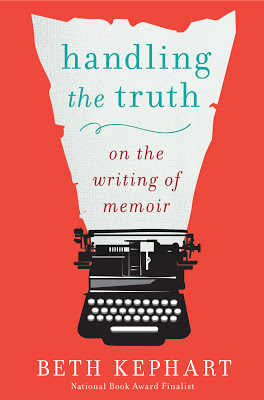

 Stephanie Trott received a B.A. in English and Creative Writing from Bryn Mawr College in 2012. Her work has appeared in Polaris: An Undergraduate Journal of Literature and Arts, Bryn Mawr’s Nimbus magazine, and the premiere issue of Buffalo Almanack. An aspiring writer and photographer, she presently lives and works in Mystic, CT.
Stephanie Trott received a B.A. in English and Creative Writing from Bryn Mawr College in 2012. Her work has appeared in Polaris: An Undergraduate Journal of Literature and Arts, Bryn Mawr’s Nimbus magazine, and the premiere issue of Buffalo Almanack. An aspiring writer and photographer, she presently lives and works in Mystic, CT.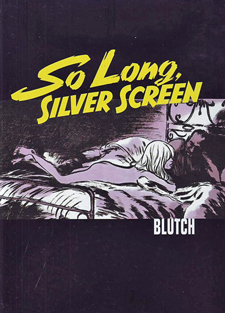
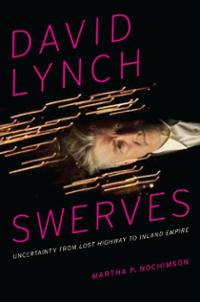
 Chris Ludovici has published articles in The Princeton Packet and online at Cinedelphia. His fiction has appeared in several literary magazines, and in 2009 he won the Judith Stark awards in fiction and drama. He has completed three novels, two on his own and one with his wife Desi whom he lives with along with their son Sam and too many cats in Drexel Hill.
Chris Ludovici has published articles in The Princeton Packet and online at Cinedelphia. His fiction has appeared in several literary magazines, and in 2009 he won the Judith Stark awards in fiction and drama. He has completed three novels, two on his own and one with his wife Desi whom he lives with along with their son Sam and too many cats in Drexel Hill.